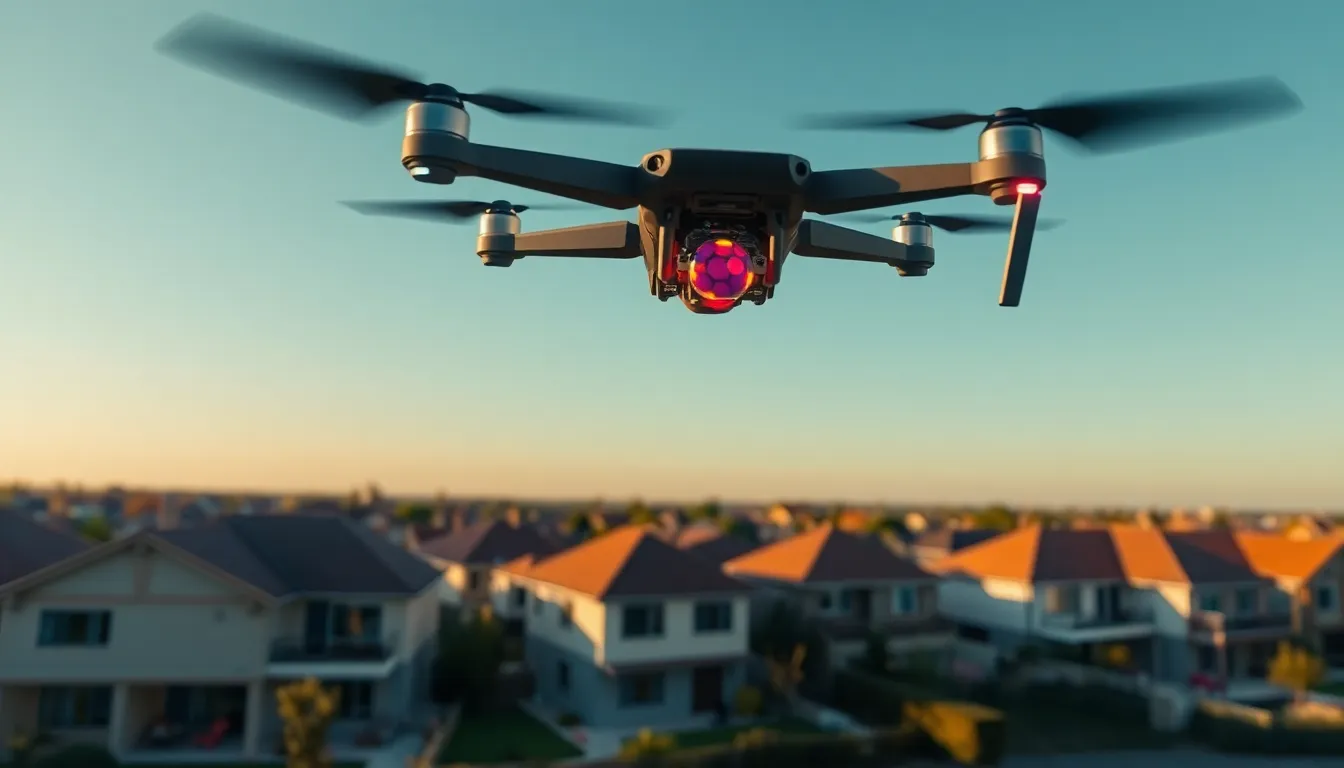Imagine flying a drone that runs on a tiny computer no bigger than a credit card. Sounds like science fiction, right? Welcome to the world of the Webbizmagnet Raspberry Pi Zero thermal drone. This nifty gadget can take you to new heights, literally. Whether you’re interested in aerial photography or innovative applications in agriculture, the Raspberry Pi Zero brings a wealth of possibilities to the table. In this guide, we’ll explore everything from the technology behind it to the nitty-gritty of building your very own thermal drone. Buckle up: it’s going to be a thrilling ride.
Table of Contents
ToggleOverview of Raspberry Pi Zero and Its Applications

What Is a Raspberry Pi Zero?
The Raspberry Pi Zero is a small, affordable single-board computer that packs a powerful punch. Launched by the Raspberry Pi Foundation, it offers flexibility that enthusiasts crave. Weighing just 9 grams, the Pi Zero fits snugly in the palm of your hand yet can perform quite complex tasks. With a 1 GHz, single-core CPU and 512 MB of RAM, it provides sufficient power for various applications without very costly.
Popular Applications for Raspberry Pi Zero
The versatility of the Raspberry Pi Zero opens doors to a variety of applications. From home automation to robotics and even digital signage, its uses are nearly endless. Hobbyists love using it for DIY projects like retro gaming consoles or smart mirrors. In the world of drones, particularly thermal imaging drones, the Raspberry Pi Zero proves to be an excellent choice because of its compact size and cost-effectiveness.
Why Choose Raspberry Pi Zero for Drones?
Key Features for Thermal Drones
When building a thermal drone, choosing the right components is essential. The Raspberry Pi Zero supports various sensors and cameras, making it ideal for capturing thermal imagery. Its lightweight design ensures that you won’t compromise on flight time or efficiency. Also, the ability to run multiple programming languages allows developers to tailor their applications to specific needs. The integration of Wi-Fi and Bluetooth capabilities adds a layer of convenience for remote control and data transmission.
Benefits of Using Thermal Imaging in Drones
How Thermal Imaging Works
Thermal imaging technology detects infrared radiation, converting it into an image that displays temperature variations. This method provides invaluable insights across various sectors. From identifying hotspots in electrical systems to locating people in search and rescue missions, the applications are vast and impactful. Drones equipped with thermal cameras can cover large areas quickly, making them indispensable for numerous commercial, industrial, and public safety uses.
Applications of Thermal Imaging Drones
Thermal imaging drones have gained traction in numerous fields. For agricultural monitoring, they help farmers identify areas needing irrigation by detecting differences in vegetation health. In industrial settings, these drones can spot thermal leaks in buildings or inspect solar panel efficiency. Even wildlife researchers employ thermal drones for tracking endangered species without disturbing their natural habitat.
Building Your Own Raspberry Pi Zero Thermal Drone
Essential Components and Equipment
Creating a thermal drone based on the Raspberry Pi Zero requires a few key components. You will need:
- Raspberry Pi Zero Board
- Thermal Camera Module
- Drone Frame
- Battery
- Electronic Speed Controllers (ESC)
- Motors and Propellers
- Receiver and Transmitter for remote control
Gathering these components will put you on the right track, but remember to consider weight constraints carefully to optimize flight performance.
Step-by-Step Assembly Guide
- Start with Your Frame: Assemble your drone frame, ensuring it’s sturdy enough to support the additional weight from the Raspberry Pi and thermal camera.
- Attach the Motors: Securely attach the motors to the frame. Ensure they are rated for the expected weight of the drone plus any extra equipment.
- Install the Raspberry Pi Zero: Connect the Raspberry Pi to the frame using standoffs or a secure mount.
- Connect the Thermal Camera: Plug in your thermal camera module according to the manufacturer’s instructions. Make sure the camera lens is unobstructed.
- Wire Everything Up: Connect the ESCs, receiver, and battery, ensuring all connections are secure.
- Test It Out: After assembly, conduct a dry test outside without the propellers, followed by a cautious test flight to ensure everything functions as it should.
Best Practices for Operating Your Thermal Drone
Maintaining Your Hardware and Software
To keep your Raspberry Pi Zero thermal drone in excellent working order, regular maintenance is key. Clean the thermal camera lens after each flight to avoid blurred images. Keep an eye on battery health and storage, calibrate it regularly to prolong its life. Updating the software also enhances performance and features, so don’t skip routine checks.
Safety and Regulatory Considerations
Before launching your thermal drone, familiarize yourself with local regulations. Most countries require specific permits for flying drones with thermal imaging capabilities due to privacy concerns. Always maintain a safe distance from people and property to minimize risks. Finally, consider conducting flight tests in remote areas to ensure you’re compliant with safety guidelines.
